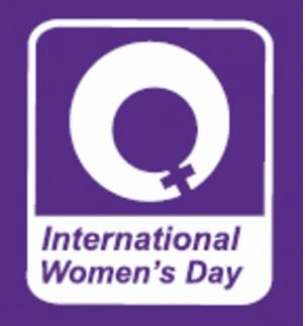The History of International Women’s Day
Published: Tuesday, March 06, 2012

International Women's Day (8 March) is an occasion marked by women's groups around the world. It is designated in many countries as a national holiday. When women on all continents, often divided by national boundaries and by ethnic, linguistic, cultural, economic and political differences, come together to celebrate their Day, they can look back to a tradition that represents at least nine decades of struggle for equality, justice, peace and development.
International Women's Day is the story of ordinary women as makers of history; it is rooted in the centuries-old struggle of women to participate in society on an equal footing with men
The idea of International Women's Day began at the turn of the 20th Century during the industrial period.
1909
In accordance with a declaration by the Socialist Party of America, the first National Woman's Day was observed across the United States on 28 February. Women continued to celebrate it on the last Sunday of that month through 1913.
1910
The Socialist International, meeting in Copenhagen, established a Women's Day, international in character, to honour the movement for women's rights and to assist in achieving universal suffrage for women. The proposal was greeted with unanimous approval by the conference of over 100 women from 17 countries, which included the first three women elected to the Finnish parliament. No fixed date was selected for the observance.
1911
As a result of the decision taken at Copenhagen the previous year, International Women's Day was marked for the first time (19 March) in Austria, Denmark, Germany and Switzerland, where more than one million women and men attended rallies. In addition to the right to vote and to hold public office, they demanded the right to work, to vocational training and to an end to discrimination on the job.
Less than a week later, on 25 March, the tragic Triangle Fire in New York City took the lives of more than 140 working girls, most of them Italian and Jewish immigrants. This event had a significant impact on labour legislation in the United States, and the working conditions leading up to the disaster were invoked during subsequent observances of International Women's Day.
1913-1914
As part of the peace movement brewing on the eve of World War I, Russian women observed their first International Women's Day on the last Sunday in February 1913. Elsewhere in Europe, on or around 8 March of the following year, women held rallies either to protest the war or to express solidarity with their sisters.
1917
With 2 million Russian soldiers dead in the war, Russian women again chose the last Sunday in February to strike for "bread and peace". Political leaders opposed the timing of the strike, but the women went on anyway. The rest is history: Four days later the Czar was forced to abdicate and the provisional Government granted women the right to vote. That historic Sunday fell on 23 February on the Julian calendar then in use in Russia, but on 8 March on the Gregorian calendar in use elsewhere.
Since those early years, International Women's Day has assumed a new global dimension for women in developed and developing countries alike. The growing international women's movement has helped make the commemoration a rallying point for coordinated efforts to demand women's rights and participation in the political and economic process. Increasingly, International Women's Day is a time to reflect on progress made, to call for change and to celebrate acts of courage and determination by ordinary women who have played an extraordinary role in the history of women's rights.
Click here to read the NWCI statistics concerning IWD .....
